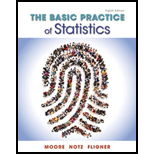Browse All Chapters of This Textbook
Book Details
A defining statistics education, The Basic Practice of Statistics puts data analysis at the forefront and begins to develop students' reasoning and judgment about statistical studies.
Written by an author team of accomplished leaders in statistics education, The Basic Practice of Statistics (BPS) reflects the actual practice of statistics, where data analysis and design of data production join with probability-based inference to form a coherent science of data. The authors' ultimate goal is to equip students to carry out common statistical procedures and to follow statistical reasoning in their fields of study and in their future employment.
The text's long-standing renown is built on an inspired framework of balanced content, experience with data, and the importance of ideas. These themes are widely accepted by statisticians concerned about teaching and are directly connected to and reflected by the themes of the College Report of the Guidelines in Assessment and Instruction for Statistics Education (GAISE) Project.
The eighth edition of The Basic Practice of Statistics is supported in SaplingPLUS for a user experience of its own. SaplingPLUS combines Macmillan's StatsTools, powerful multimedia resources, and text-specific exercises with the powerful targeted feedback of Sapling Learning, where every problem is a teaching and learning opportunity.
Sample Solutions for this Textbook
We offer sample solutions for The Basic Practice of Statistics homework problems. See examples below:
More Editions of This Book
Corresponding editions of this textbook are also available below:
